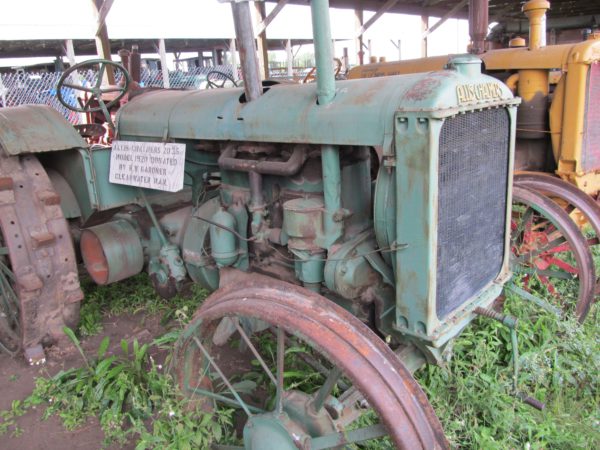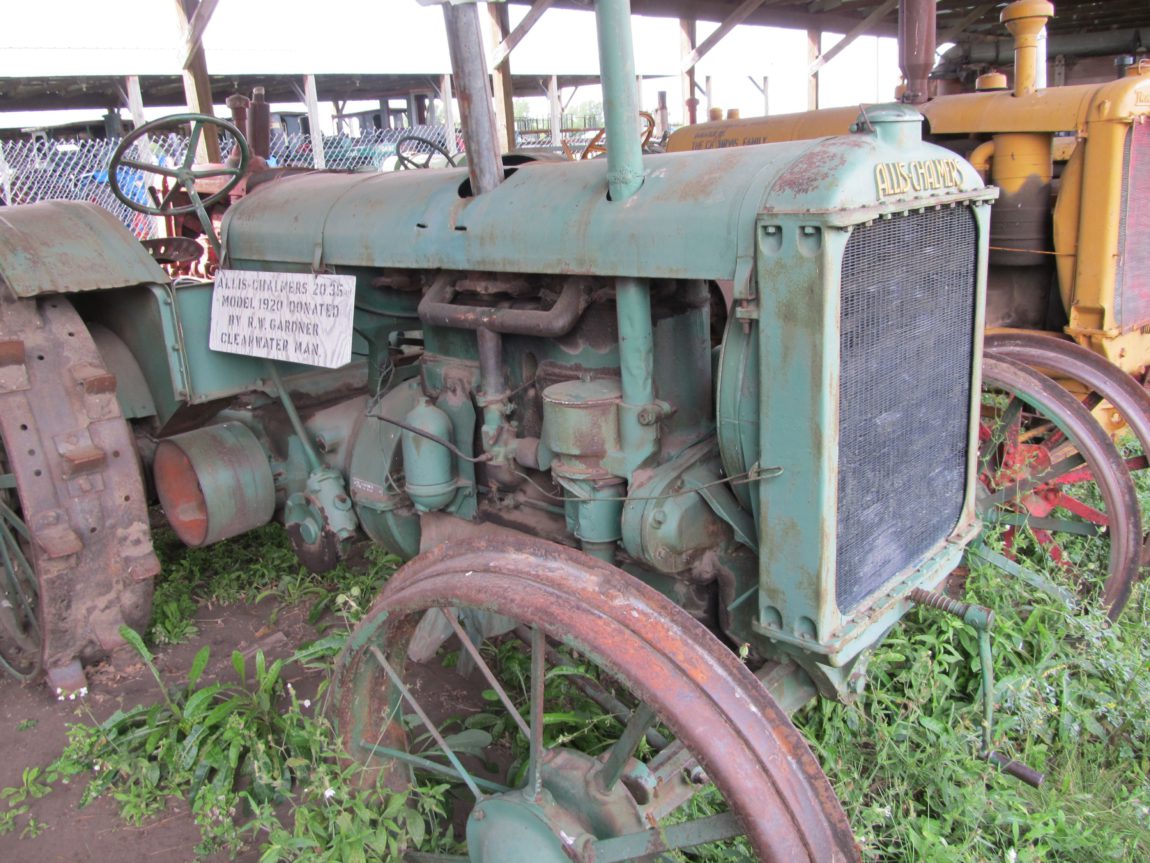The Manitoba Agricultural Museum collection contains an Allis Chalmers Model E 20-35 tractor, which was donated to the Museum by Mr. R.W. Gardiner of Clearwater, Manitoba.

The Allis Chalmers Company resulted from a 1901 merger of heavy machinery manufacturing companies in the Milwaukee, Wisconsin area. Allis Chalmers (AC) experienced some growth issues which resulted in the company declaring bankruptcy in 1912. The company was reorganized and resumed business. One of the receivers in the bankruptcy was Otto Falk, who become President of the reorganized company. Falk had the idea that AC should enter the farm machinery business. He arranged for AC to obtain the license to build the Motoculture Company’s self-propelled rotary cultivator. However, this Swiss designed cultivator failed to sell to North American farmers. AC then designed a tractor-truck which also failed to sell to farmers. However, AC at the same time designed Model 10-18 tractor which was an example of the three wheeled tractor craze which was sweeping North America at the time. The best example of the three wheeler tractor were the Little Bull and Big Bull tractors. The three-wheeler craze was short lived, and soon fell out of favor with farmers. AC then designed the Model 6-12 tractor which was a motor cultivator type. However, the tractor was not a sales success. To make matters worse, the design so closely copied the Universal tractor, that when Moline purchased Universal, Moline successfully sued AC for copying the design.
At this time, the future of tractor design was being illuminated by the Fordson design. AC designed a response to the Fordson, the AC 15-30. The horsepower rating was too conservative and the tractor was soon re-rated as 18-30 and called the Model E. AC modified the tractor somewhat and the Model E 18-30 when tested at Nebraska, was re-rated again at 20-35. Most of this horsepower increase apparently was due to the engine being configured to burn gasoline. While kerosene-fueled 20-35s were produced, these tractors were exported abroad.



